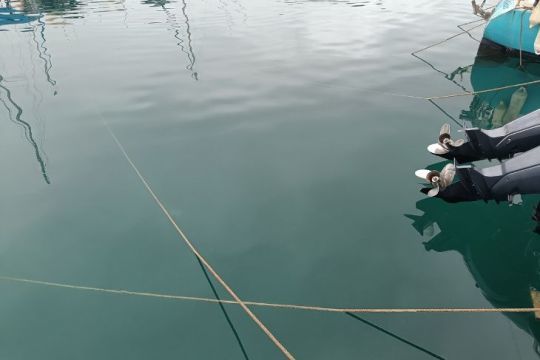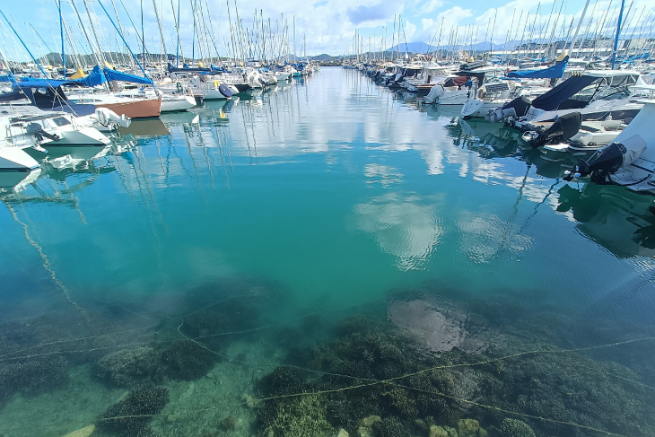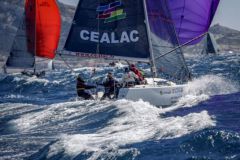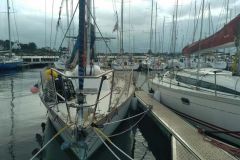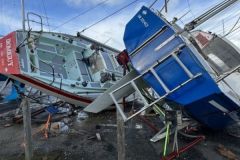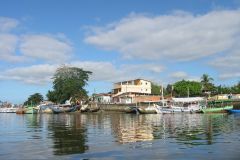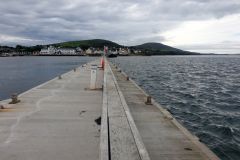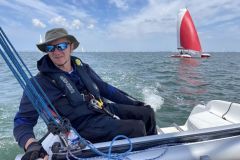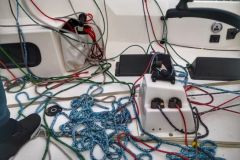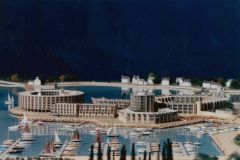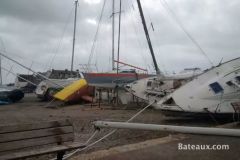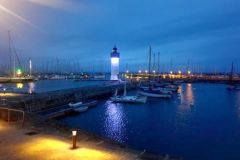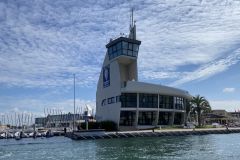In tropical regions with a high risk of severe weather, hurricane hawsers are common. Boat owners are often asked to install them on their berths, or when they are already in place, to pay a rental fee for the equipment at the same time as the berth.
The principle
Hurricane hawsers are safety hawsers designed to protect both the boat and the harbor infrastructure in the event of a strong gale.
A mother chain is usually placed under each port purlin. The hawsers are tied to this safety chain, then run across the span and are connected to the opposite purlin by means of hangers. Each location has two hawsers.
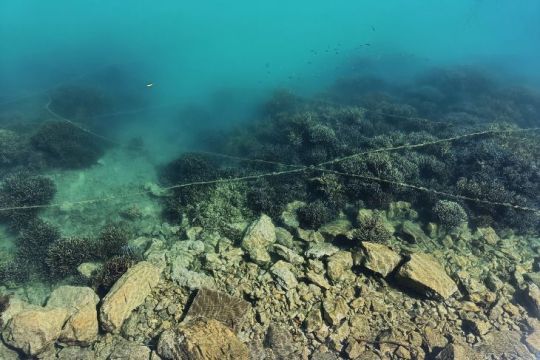
The drawing of the hawsers in stages
The procedure to be implemented when a gale is approaching may vary from country to country, or from port to port. But to help you understand the system, we wanted to give you an example of how it works.
- If the alert threshold is exceeded, owners are notified by the harbour manager of the impending danger. They can choose to leave the harbour to seek shelter elsewhere, or they can choose to remain at their location and suffer the event.
- A date and time are defined: after this time, the movements in the port will be prohibited, and the persons in charge will have for obligation to draw the cyclonic hawsers on their boat.
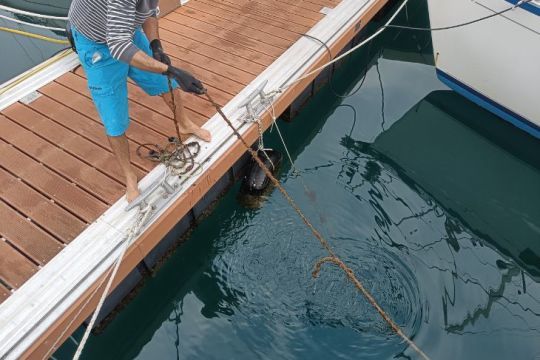
- Each owner retrieves the two hawsers dedicated to his harbor place thanks to the two hangers, and turns them on the two cleats of his boat arranged on the outside. The vessel is moved away from the pontoon.
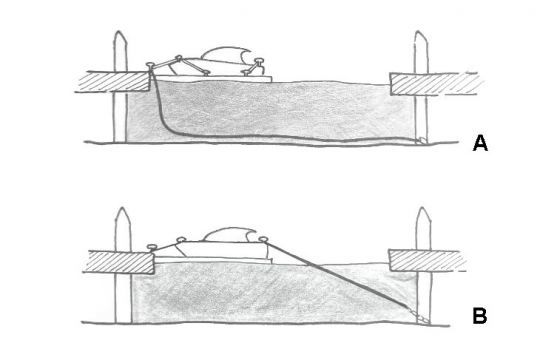
- While the traditional mooring of a boat (A) usually provides for a mooring to both the pontoon and the catway, the cyclone mooring (B) no longer connects the vessel to the catway. It is recommended to double the mooring to the pontoon and to ensure the elasticity of the mooring lines.
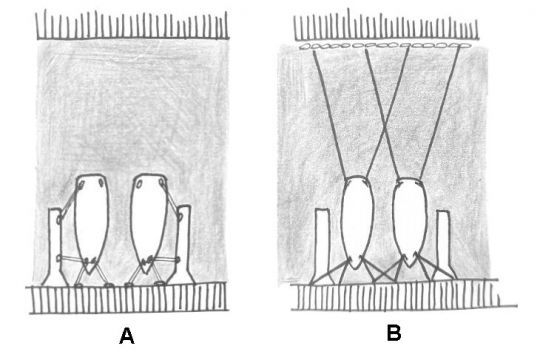
- When possible, hawsers can also be pulled ashore to reduce the load on the pontoons. In order not to overload them, they should be hit far from the boat, as horizontally as possible. The mooring can be taken up on a strong point, such as the mast.
- The electrical cables are disconnected, and the owners check the boat's batteries to allow the bilge pumps to operate if necessary.
The ship set back from the pontoon and the dolphins is normally protected from dangers. Better moored, it is supposed to be less prone to movement. It is advisable to think about the tidal range and the modification of the water height which can be generated by the passage of a cyclone!
Beyond the hawser pulling, other precautions are good to take to make your boat safe:
- Free up the deck as much as possible
- Put away all items that can be put away
- Roll and securely harness the sails and canopies
- Provide more fenders and buoys along the hull
- Place your mast offset from the masts of neighboring boats
Safety equipment to be checked
When you arrive at a harbor site where safety hawsers are already in place, it is important to check their compatibility with your boat: they must fit the size of the cleats on board, which themselves must be in good condition and securely fastened to the deck.
They must also be of a suitable diameter, which generally varies from 12 to 22 millimeters depending on the weight, length and dunnage of the boat.
Ports normally check the installations regularly, often annually, before the start of the hurricane season. During these "test" tensioning of hawsers, the mooring to the main chain is checked by divers in the port and the owners are trained to set up the system. This verification is also an opportunity to ensure that the equipment is correctly positioned: the angle between the two hawsers of the same boat must be at least 60 degrees and the hawsers of two neighboring boats must cross each other.
